An Exceptional Anti Slavery Medallion Inscribed in Upper Case Around the Edge ‘Am I Not a Man and a Brother ?’
An Exceptional Anti Slavery Medallion Inscribed in Upper Case Around the Edge ‘Am I Not a Man and a Brother ?’
The figure kneeling in supplication his ankles and wrists shackled
Black on white Jasper
Design by William Hackwood for Wedgwood
Oval turned wooden frame
England
Circa 1790
Size: 3.2cm high, 3cm wide - 1¼ ins high, 1¹⁄₈ ins wide / 6cm high, 5.8cm wide - 2³⁄₈ ins high, 2¼ ins wide (framed)
cf: Hand-written accompanying notes record that it was given by a sculptor named Bacon to the poet William Cowper. The sculptor referred to was John Bacon who created fine marble portraits and monuments and is known to have worked for Josiah Wedgwood. Wedgwood was greatly concerned by the plight of the slave and it may have been at Wedgwood’s request that Bacon gave this piece to William Cowper. As a poet Cowper wrote the words for many hymns, but his best-known composition is a moving poem titled ‘The Negro’s Complaint’ written in 1788, this song talks about slavery from the perspective of the slave. Cowper gave the medallion to his cousin, in whose family this little ‘token’ has passed by decent. The modelling of the medallion has traditionally been attributed to William Hackwood however John Bacon may have been involved in the design in some way.
See: ‘The Dictionary of Wedgwood’ Robin Reilly and George Savage, Antique Collectors Club Ltd. 1980 pg. 319 and ‘Josiah Wedgwood and His Pottery’ William Burton, Cassell and Company, Ltd. 1922, pg. 181, for an illustration of an example in the British Musuem
The figure kneeling in supplication his ankles and wrists shackled
Black on white Jasper
Design by William Hackwood for Wedgwood
Oval turned wooden frame
England
Circa 1790
Size: 3.2cm high, 3cm wide - 1¼ ins high, 1¹⁄₈ ins wide / 6cm high, 5.8cm wide - 2³⁄₈ ins high, 2¼ ins wide (framed)
cf: Hand-written accompanying notes record that it was given by a sculptor named Bacon to the poet William Cowper. The sculptor referred to was John Bacon who created fine marble portraits and monuments and is known to have worked for Josiah Wedgwood. Wedgwood was greatly concerned by the plight of the slave and it may have been at Wedgwood’s request that Bacon gave this piece to William Cowper. As a poet Cowper wrote the words for many hymns, but his best-known composition is a moving poem titled ‘The Negro’s Complaint’ written in 1788, this song talks about slavery from the perspective of the slave. Cowper gave the medallion to his cousin, in whose family this little ‘token’ has passed by decent. The modelling of the medallion has traditionally been attributed to William Hackwood however John Bacon may have been involved in the design in some way.
See: ‘The Dictionary of Wedgwood’ Robin Reilly and George Savage, Antique Collectors Club Ltd. 1980 pg. 319 and ‘Josiah Wedgwood and His Pottery’ William Burton, Cassell and Company, Ltd. 1922, pg. 181, for an illustration of an example in the British Musuem
An Exceptional Anti Slavery Medallion Inscribed in Upper Case Around the Edge ‘Am I Not a Man and a Brother ?’
The figure kneeling in supplication his ankles and wrists shackled
Black on white Jasper
Design by William Hackwood for Wedgwood
Oval turned wooden frame
England
Circa 1790
Size: 3.2cm high, 3cm wide - 1¼ ins high, 1¹⁄₈ ins wide / 6cm high, 5.8cm wide - 2³⁄₈ ins high, 2¼ ins wide (framed)
The figure kneeling in supplication his ankles and wrists shackled
Black on white Jasper
Design by William Hackwood for Wedgwood
Oval turned wooden frame
England
Circa 1790
Size: 3.2cm high, 3cm wide - 1¼ ins high, 1¹⁄₈ ins wide / 6cm high, 5.8cm wide - 2³⁄₈ ins high, 2¼ ins wide (framed)
Josiah Wedgwood was an English potter and businessman who is credited with the industrialisation of the production of pottery as well as inventing modern marketing. Wedgwood was born in 1730 and was a Unitarian and prominent abolitionist, becoming a key member of the Society for the Abolition of the Slave Trade. His main contribution to the abolitionist cause was producing the first anti-slavery medallion in 1787, depicting a kneeling slave in chains, with the phrase ‘Am I Not a Man and a Brother’. The medallions were mass produced and distributed and became widely worn and acknowledged, bringing public attention to the abolitionist movement. Wedgwood and the Society for the Abolition of the Slave Trade was so revolutionary in the context of eighteenth-century society, as slavery was widely accepted and relied upon, particularly economically, as much of wealthy British society was built using the profits from the slave trade. Thus, opposing slavery was opposing many wealthy and powerful members and groups of society.
Many of the medallions can be seen in museums and collections around the world. The medallion was designed by William Hackwood, who worked closely with Wedgwood, and it became the most famous image of a black person in all of eighteenth-century art. The image and phrase became well known and a well-used and a recognised symbol of allegiance to the abolitionist cause. Many people found original and creative ways to don these medallions. Thomas Clarkson, a leading abolitionist, describes in his 1808 memoirs that men… ‘inlaid in gold on the lid of their snuffboxes. Of the ladies, several wore them in bracelets, and others had them fitted up in an ornamental manner as pins for the hair. At length, the taste for wearing them became general; and thus fashion, which usually confines itself to worthless things, was seen for once in the honourable office of promoting the cause of justice, humanity, and freedom’. It is unknown as to how many medallions were made and distributed as well as how many variants of them there were. Thomas Clarkson credited Wedgwood’s medallions with being instrumental in ‘turning the attention of our countrymen to the case of the injured Africans, and of procuring a warm interest in their favour’.
Many of the medallions can be seen in museums and collections around the world. The medallion was designed by William Hackwood, who worked closely with Wedgwood, and it became the most famous image of a black person in all of eighteenth-century art. The image and phrase became well known and a well-used and a recognised symbol of allegiance to the abolitionist cause. Many people found original and creative ways to don these medallions. Thomas Clarkson, a leading abolitionist, describes in his 1808 memoirs that men… ‘inlaid in gold on the lid of their snuffboxes. Of the ladies, several wore them in bracelets, and others had them fitted up in an ornamental manner as pins for the hair. At length, the taste for wearing them became general; and thus fashion, which usually confines itself to worthless things, was seen for once in the honourable office of promoting the cause of justice, humanity, and freedom’. It is unknown as to how many medallions were made and distributed as well as how many variants of them there were. Thomas Clarkson credited Wedgwood’s medallions with being instrumental in ‘turning the attention of our countrymen to the case of the injured Africans, and of procuring a warm interest in their favour’.
A gift of John Bacon to William Cowper
Thence by descent
Private UK collection
cf: Hand-written accompanying notes record that it was given by a sculptor named Bacon to the poet William Cowper. The sculptor referred to was John Bacon who created fine marble portraits and monuments and is known to have worked for Josiah Wedgwood. Wedgwood was greatly concerned by the plight of the slave and it may have been at Wedgwood’s request that Bacon gave this piece to William Cowper. As a poet Cowper wrote the words for many hymns, but his best-known composition is a moving poem titled ‘The Negro’s Complaint’ written in 1788, this song talks about slavery from the perspective of the slave. Cowper gave the medallion to his cousin, in whose family this little ‘token’ has passed by decent. The modelling of the medallion has traditionally been attributed to William Hackwood however John Bacon may have been involved in the design in some way.
See: ‘The Dictionary of Wedgwood’ Robin Reilly and George Savage, Antique Collectors Club Ltd. 1980 pg. 319 and ‘Josiah Wedgwood and His Pottery’ William Burton, Cassell and Company, Ltd. 1922, pg. 181, for an illustration of an example in the British Musuem
Thence by descent
Private UK collection
cf: Hand-written accompanying notes record that it was given by a sculptor named Bacon to the poet William Cowper. The sculptor referred to was John Bacon who created fine marble portraits and monuments and is known to have worked for Josiah Wedgwood. Wedgwood was greatly concerned by the plight of the slave and it may have been at Wedgwood’s request that Bacon gave this piece to William Cowper. As a poet Cowper wrote the words for many hymns, but his best-known composition is a moving poem titled ‘The Negro’s Complaint’ written in 1788, this song talks about slavery from the perspective of the slave. Cowper gave the medallion to his cousin, in whose family this little ‘token’ has passed by decent. The modelling of the medallion has traditionally been attributed to William Hackwood however John Bacon may have been involved in the design in some way.
See: ‘The Dictionary of Wedgwood’ Robin Reilly and George Savage, Antique Collectors Club Ltd. 1980 pg. 319 and ‘Josiah Wedgwood and His Pottery’ William Burton, Cassell and Company, Ltd. 1922, pg. 181, for an illustration of an example in the British Musuem
An Exceptional Anti Slavery Medallion Inscribed in Upper Case Around the Edge ‘Am I Not a Man and a Brother ?’
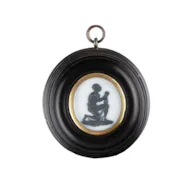
SOLD
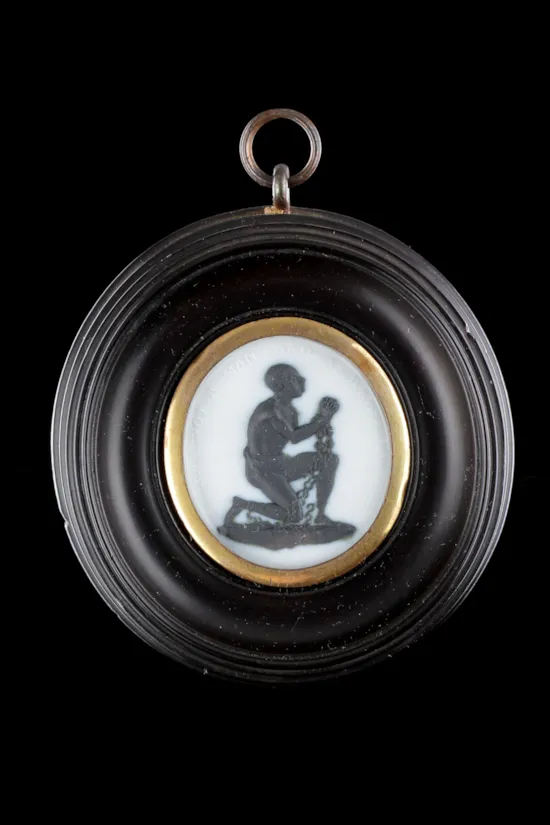
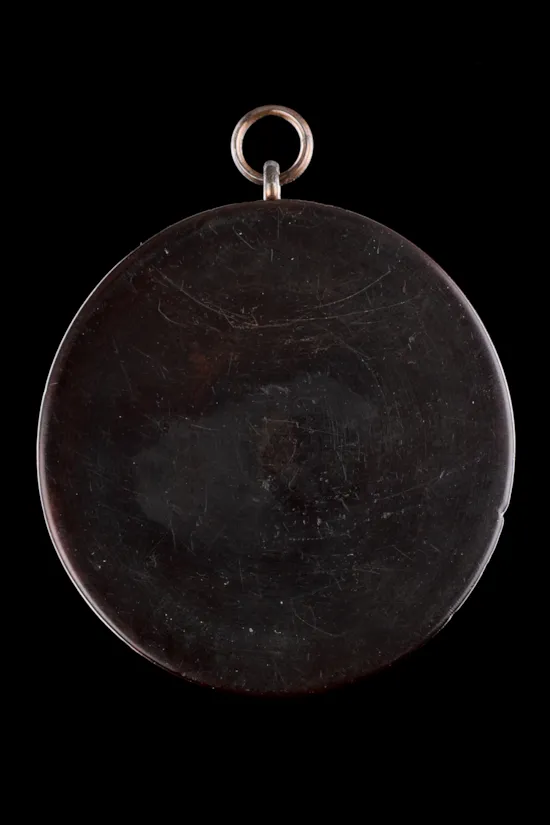
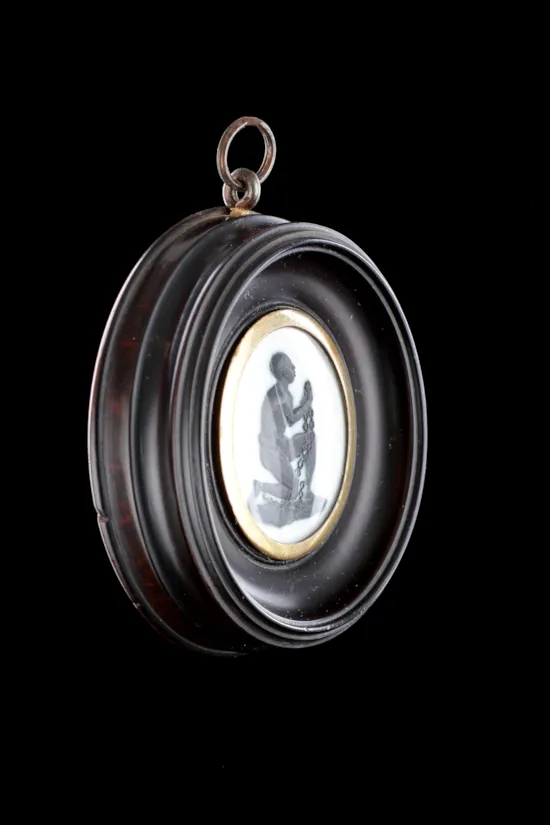
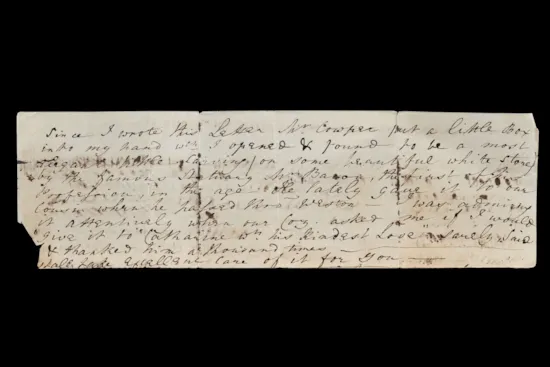
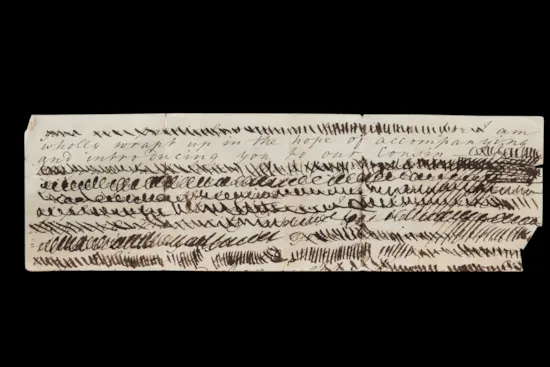
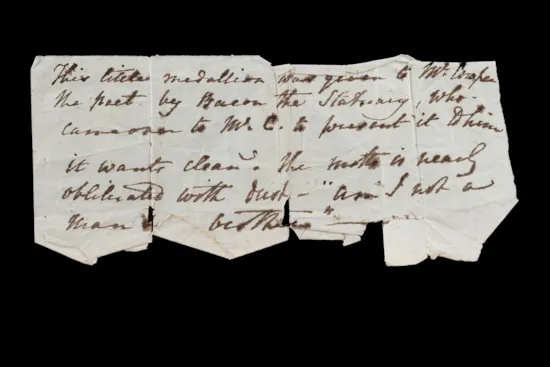
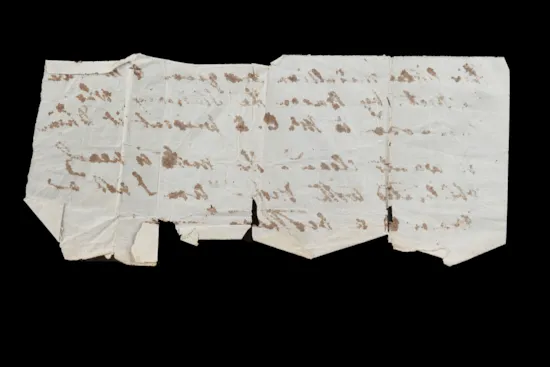
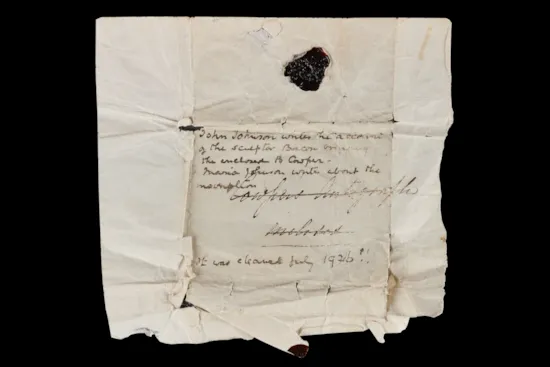
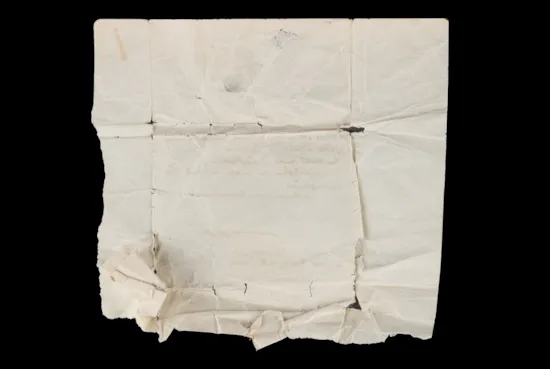
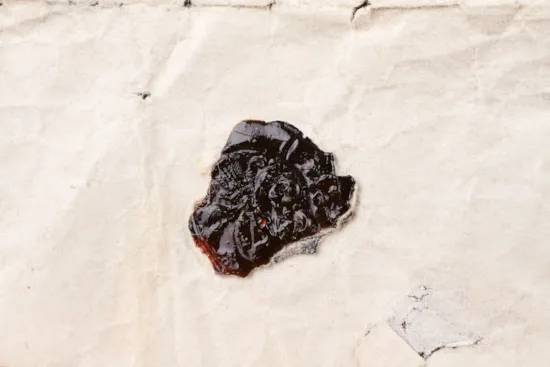










YOU MAY ALSO LIKE

